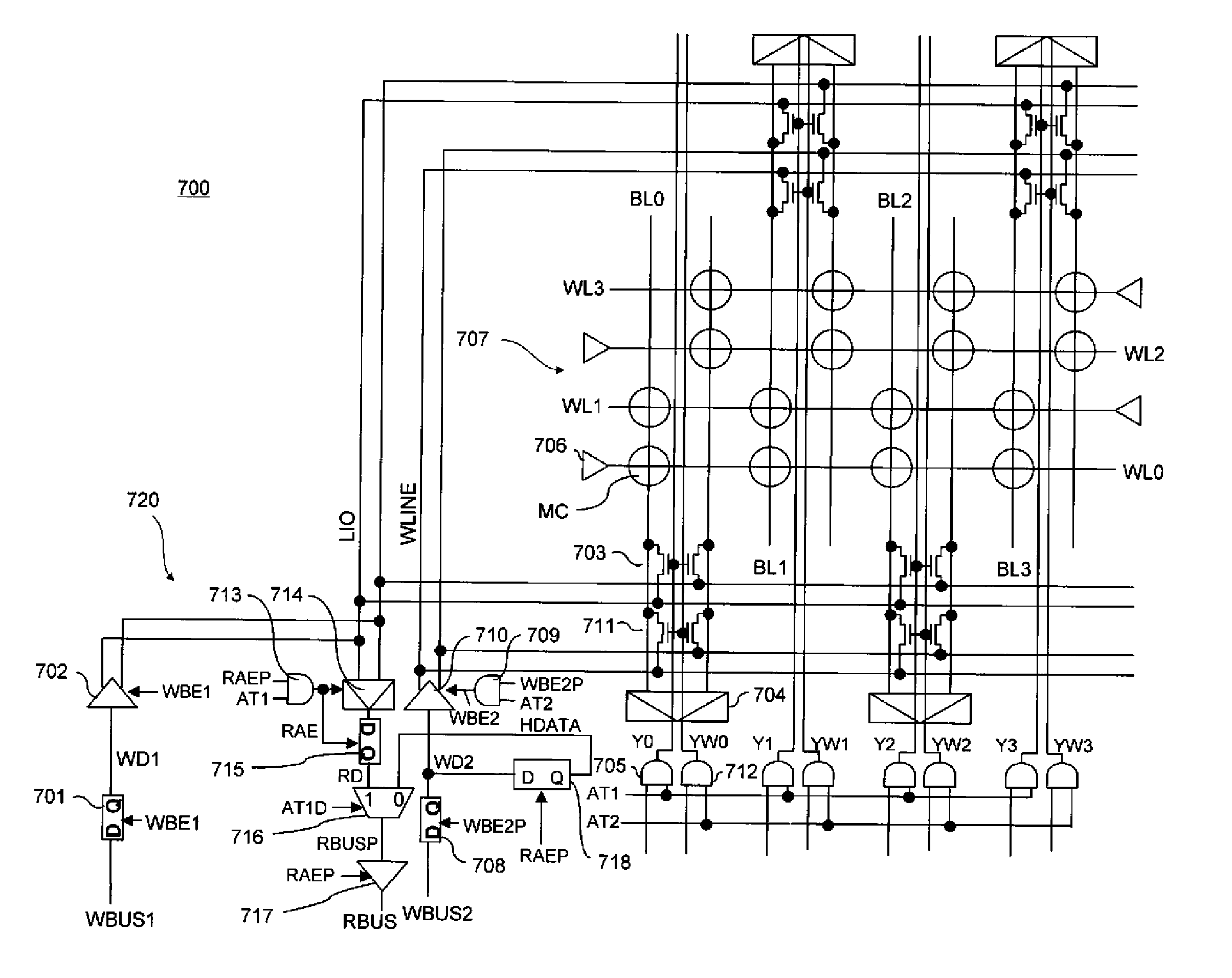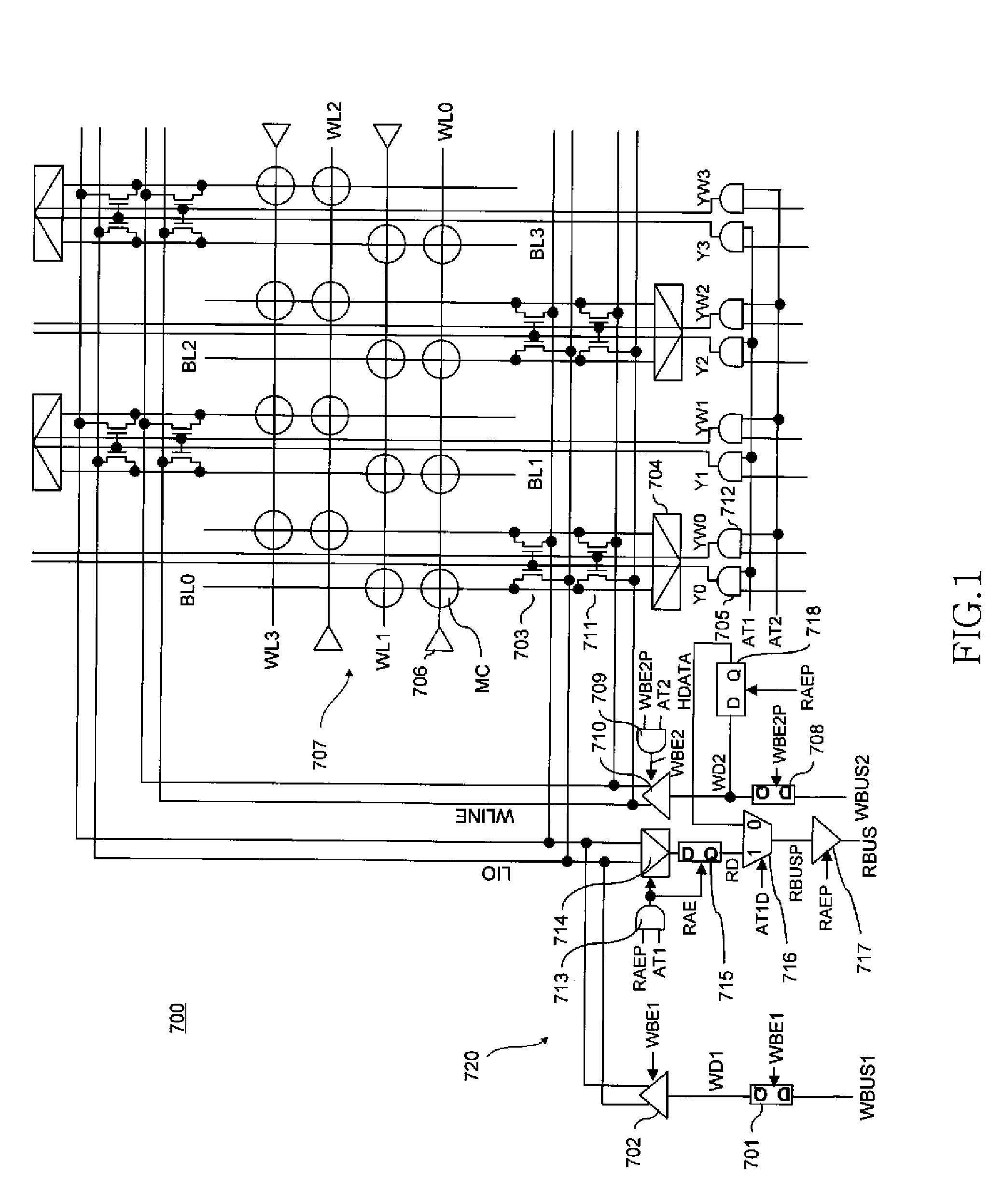Semiconductor memory device and control method thereof
a memory device and semiconductor technology, applied in the direction of information storage, static storage, digital storage, etc., can solve the problems of inability to have compatibility, difficult to determine the data held by the phase change memory cell, and difficulty in achieving high speed access, so as to achieve high speed, reduce consumption power, and not shorten the life of the memory cell
- Summary
- Abstract
- Description
- Claims
- Application Information
AI Technical Summary
Benefits of technology
Problems solved by technology
Method used
Image
Examples
first embodiment
[0038]FIG. 1 is a circuit diagram showing a configuration of principal parts of a semiconductor memory device 700 according to the
[0039]As shown in FIG. 1, the semiconductor memory device 700 according to the first embodiment includes a phase-change memory cell array 707 that includes the word lines WL0, WL1, . . . , the bit line pairs BL0, BL1, . . . , and the memory cells MC arranged at intersections of the word lines with the bit lines. Sense amplifiers 704 are connected to each of the bit line pairs BL0, BL1, . . . . Each of the sense amplifiers 704 is connected via a corresponding column switch 703 to the I / O line LIO and via a corresponding column switch 711 to the data line WLINE for write. Column select signals Y0, Y1, . . . serving as outputs of column select drivers 705 are supplied to the respective column switches 703 and any one of the switches is turned on during the read operation or the write operation. Meanwhile, column select signals YW0, YW1, . . . for write servi...
second embodiment
[0075]the present invention is described next.
[0076]While the first embodiment performs the write operation promptly after the pre-write operation in the write cycle, the second embodiment performs the write operation and the pre-write operation in synchronization with the clock. Because the clock ACLKD estimating the pre-write operation time does not exist, the address transition detection signal AT2 for the write-to-write operation is generated by a detection circuit 730a shown in FIG. 6. The detection circuit 730a shown in FIG. 6 has a circuit configuration obtained by omitting SR-FF from the detection circuit 730 shown in FIG. 2. The circuit part that generates the address transition detection signal AT1 for the write-to-read operation is unchanged.
[0077]FIG. 7 is a timing diagram showing the write-to-write-to-read operation for the same address.
[0078]First, when the address corresponding to the bit line pair BL0 is specified and a write request is issued at the time t1, the pre...
third embodiment
[0086]the present invention is described next.
[0087]According to recent DRAMs, a predetermined latency can be added to the period from when a write command is inputted to when the write operation upon an array is started. For example, according to DDR DRAMs, DQS starts to be inputted in the current cycle, data is fetched in synchronization with DQS in the next cycle, and the data is provided in synchronization with CLK in the cycle after the next cycle. Two cycles of the latency are thus provided. When a calculation is completed within the two cycles and the write operation is performed in the regular latency, the spec tDPL(tWR) is not violated. The third embodiment provides an example applying the configuration described in the second embodiment one cycle earlier. “Earlier” means that, for the pre-write operation and the write operation in response to an issuance of a write request, the pre-write operation is performed during a write latency period and the write operation is perfor...
PUM
 Login to View More
Login to View More Abstract
Description
Claims
Application Information
 Login to View More
Login to View More - R&D
- Intellectual Property
- Life Sciences
- Materials
- Tech Scout
- Unparalleled Data Quality
- Higher Quality Content
- 60% Fewer Hallucinations
Browse by: Latest US Patents, China's latest patents, Technical Efficacy Thesaurus, Application Domain, Technology Topic, Popular Technical Reports.
© 2025 PatSnap. All rights reserved.Legal|Privacy policy|Modern Slavery Act Transparency Statement|Sitemap|About US| Contact US: help@patsnap.com



